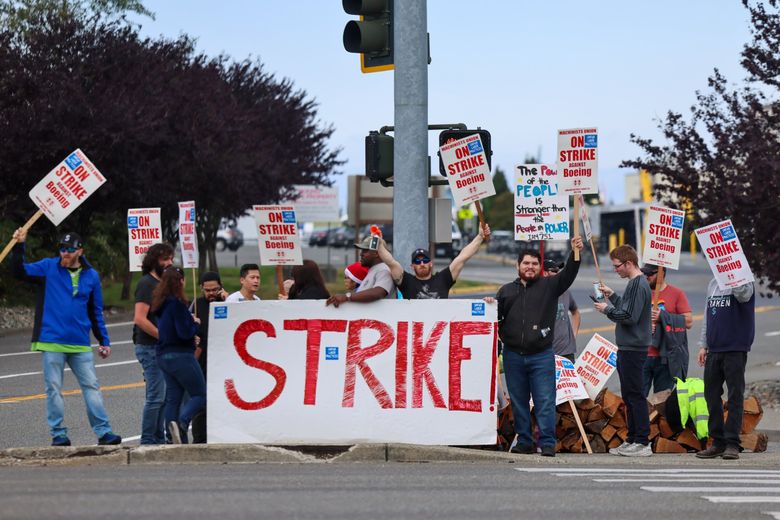After more than seven weeks on strike, Boeing’s factory workers have voted to accept a contract offer and end the walkout, allowing the company to restart idled assembly lines in the Pacific Northwest. However, this strike is just one of many challenges the troubled U.S. aerospace giant faces as it works to restore profitability and regain public trust. These challenges pose an urgent need for Boeing to maintain operations, optimize processes, and resolve outstanding financial and technical issues.
Here's ads banner inside a post
The strike involving 33,000 machinists at Boeing ended Monday night when 59% of union members voted to approve the company’s fourth contract offer, which includes a 38% pay increase over four years, a significant improvement aimed at reassuring workers. The machinists, members of the International Association of Machinists and Aerospace Workers, play a critical role in assembling Boeing’s core products, including the bestselling 737 Max, the 777, and the 767 models, at factories in Renton and Everett, Washington.
For Boeing, resuming production is essential to generate much-needed cash flow after the prolonged shutdown. Gautam Mukunda, a lecturer at the Yale School of Management, noted that the delay in production has created a critical situation even for a company as large as Boeing: “Even for a company the size of Boeing, this is truly a life-threatening issue.” The revenue losses from the strike, coupled with existing debts and operational costs, pose serious financial risks that must be addressed quickly.
Union workers are expected to return to work as early as Wednesday or as late as November 12. However, Boeing CEO Kelly Ortberg stated that it may take a few weeks for production to resume normally since some workers require retraining after the long break. This step shows Boeing’s effort to re-establish production and stabilize its workforce to meet production and delivery demands for its customers.
Here's ads banner inside a post
Although the strike has ended, Boeing’s management still faces many unresolved issues, from improving financial standing to ensuring product quality and rebuilding trust with employees, suppliers, and customers. Analysts believe Boeing has focused excessively on short-term profits, pursuing financial efficiency by “squeezing” the rights of workers and suppliers, leading to discontent and even a crisis of confidence within the company. Mukunda commented, “This might be acceptable if you were running a fashion company. But for Boeing, where they produce the most complex machines ever built by humans, it is unacceptable.”
One of Boeing’s top priorities is to increase aircraft production. Currently, the company is producing around 30 737s a month, but it needs to raise this number to over 50 to reach economic efficiency. Boosting output not only enhances revenue but also solidifies Boeing’s market position as it competes with rivals like Airbus.
Another major challenge is restoring the supply chain, which suffered significant disruption during the strike. Cai von Rumohr, an aviation analyst at TD Cowen, said that many suppliers had to halt operations or reduce staffing during the strike. “There are a lot of complex issues related to re-establishing the supply chain,” he said, emphasizing that the process requires close coordination and timely solutions to recover.
Here's ads banner inside a post
One way Boeing could generate cash is by selling subsidiaries that are not directly related to the aerospace business, such as Jeppesen Sanderson, a flight information company that it acquired in 2000 for $1.5 billion. According to von Rumohr, selling off such assets would provide Boeing with additional capital to reduce debt and improve its credit rating.
In a message to employees after the strike ended, CEO Kelly Ortberg emphasized the challenges ahead, stating, “There is much work ahead to restore Boeing to the level of excellence that made it an iconic company.” Currently, machinists earn an average annual salary of $75,608, which will increase to $119,309 under the new contract. The union noted that the wage increase promised over the contract’s term amounts to over 43%. However, union members have expressed mixed reactions to the outcome. Eep Bolaño, a calibration specialist in Seattle, said that while she voted “yes,” this is “certainly not a victory.” She explained, “We were threatened by a company that was on the brink of collapse, and yet, as one of the country’s largest unions, we couldn’t achieve two-thirds of our demands. This is humiliating.”
In contrast, other workers, like William Gardiner, a lead technician in calibration services, were pleased with the result, considering it “a positive contract.” In addition to the pay increase, the new contract includes a $12,000 signing bonus for each worker and retains a performance bonus that Boeing previously wanted to eliminate. President Joe Biden congratulated the machinists and Boeing on reaching an agreement that he said promotes fairness in the workplace and improves workers’ retirement security.
If the strike had continued, Boeing could have faced even greater financial risks. Last month, CEO Ortberg announced a plan to cut about 17,000 jobs and sell stock to protect the company’s credit rating and avoid a downgrade to junk status. The machinists’ strike—the first since an eight-week walkout in 2008—marked a major disruption in an already volatile year for Boeing.
Boeing has also faced several federal investigations this year after a door plug blew off a 737 Max on an Alaska Airlines flight in January. Federal regulators have since imposed production restrictions on Boeing until they are satisfied with the company’s manufacturing safety standards. The incident reignited safety concerns over the 737 Max, especially after two fatal crashes in 2018 and 2019 that claimed 346 lives.




